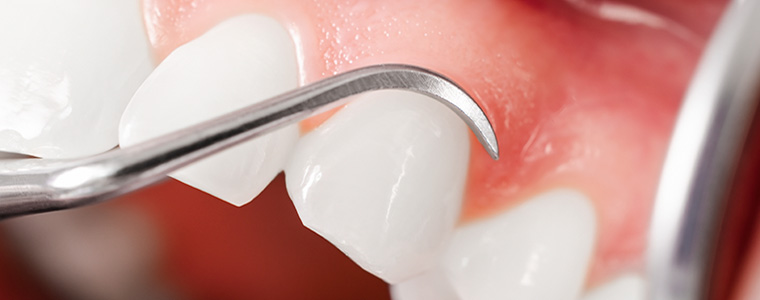
Gum disease refers to a number of oral bacterial infections that affect the surrounding and supporting tissues of teeth. Gum (periodontal) disease comes in two main stages. The initial stage is known as gingivitis and can be characterised by red, puffy gums which are often sore and may bleed upon brushing.The second and more serious stage of gingivitis occurs when the bacteria delves deeper into the jaws and begins to attack the supporting ligaments and bones. This is known as periodontitis
There are a number of treatments available for gum disease sufferers, each of which varies depending on the severity of the condition. Dental evaluation is needed to determine evaluate the extent of the damage caused by gum disease and the treatment modality that best meets your needs. When you come to our clinic for gum treatment, you will have high-tech options that will rapidly and gently eliminate most forms of gum disease, and help you to preserve your oral health and prevent tooth loss
- Do your gums bleed when you brush, floss or use a toothpick?
- Are your gums red, swollen and painful?
- Do you have pus coming from between your gums and teeth if you push on your gums?
- Are your gums pulling away from your teeth?
- Has there been a change in the way your teeth come together when you bite or chew on food?
- Do your teeth look longer because of receding gums?
- Are your teeth loose?
- Do you have bad breath?
- If you wear a partial denture, does it still fit the same?
If your dentist finds signs of gum disease in your mouth, they may recommend or perform one of the following treatments:
Dental Cleaning: The first treatment of gum disease is a professional clean by your dentist or dental hygienist in which all hardened plaque and tartar will be removed from above and below the gum line.
Root Planning & Scaling: If you address your gum disease before it becomes severe, scaling and root planing may be the only treatment you need. This is a non-surgical procedure, done under local anaesthetic may be with an ultrasonic cleaning device whereby all plaque and tartar is scraped away from below the gum line and any rough spots on the tooth root, where the germs gather, are smoothed out (planning). This smoothing of the tooth root helps to remove all bacteria and provides a clean surface for the gums to reattach to the teeth.
Gum Surgery: Periodontal surgery or Gum surgery may be recommended when non-surgical treatment is ineffective. As bacteria accumulate and advance under the gum tissue in these deep pockets, additional bone and tissue loss follows. Flap surgery or pocket reduction procedure is sometimes performed to remove tartar deposits in deep pockets or to reduce the periodontal pocket and make it easier for you or your dental professional to keep the area clean. This common surgery involves lifting back the gums and removing the tartar. The infected tissues are removed in order to eliminate any bacterial colonies that may have already started to proliferate in the tissues. Before closure, your dentist will apply an antimicrobial preparation to kill any remaining microorganisms in the tissue. Once this has been applied, the gum flap is replaced and sutured with very tiny stitches. You will then have to let this heal for up to 10 days. Pocket reduction surgery will be performed under sedation.



